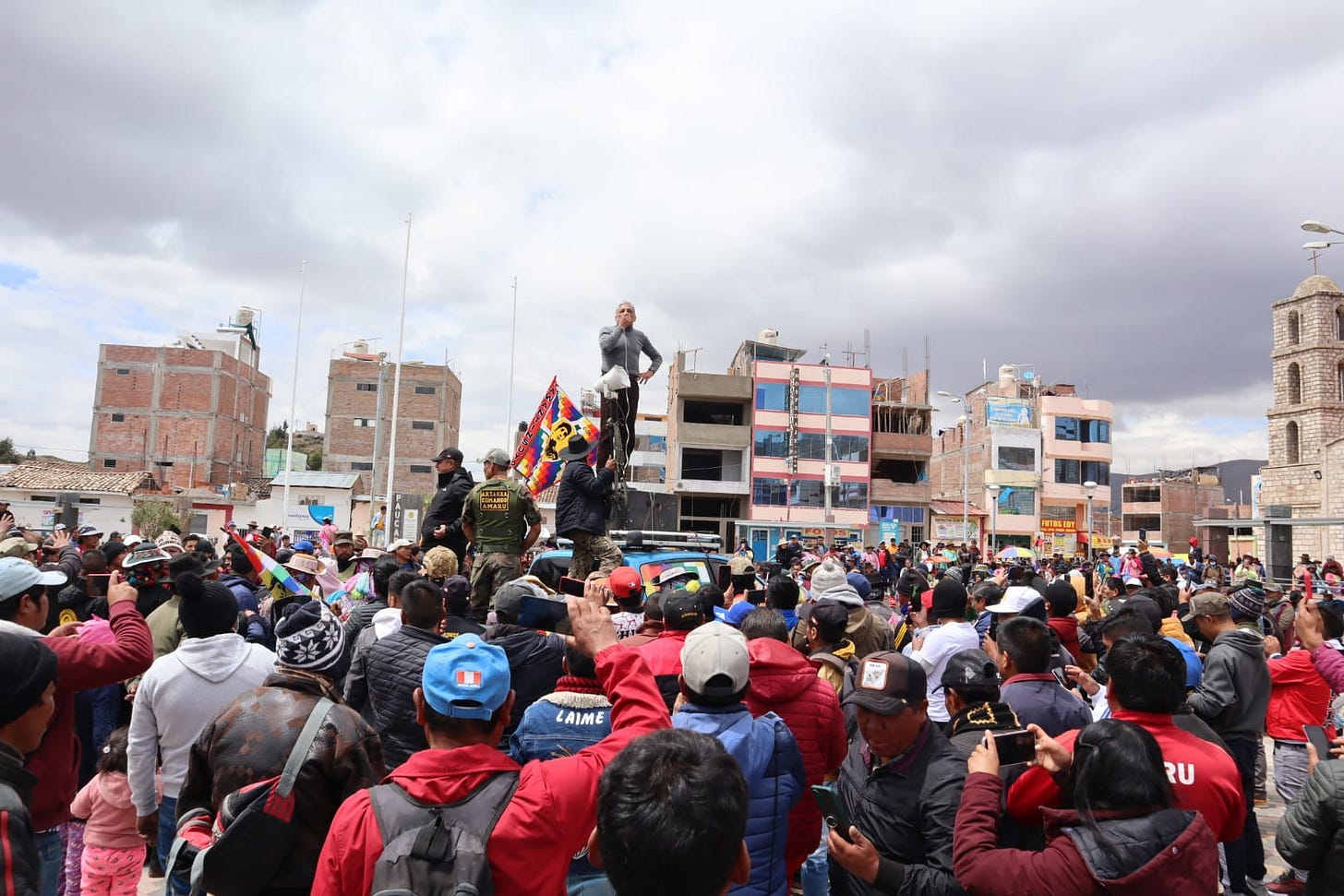What comes next for Peru?

Peru has seen some of the most turbulent recent years in all of South America. Three impeachments, a legislative snap election, a polarizing presidential run-off, and mass demonstrations have all swirled to create an atmosphere of political dysfunction. Yet another snap election may be looming in the wake of Pedro Castillo’s removal from office. Protests are pushing for immediate change, demanding both that the next vote scheduled for 2026 is moved up to the end of this year, and that the interim president, Dina Boluarte, resigns after presiding over deadly state violence against demonstrators.
International media has amply covered the situation. But what is left out of the conversation right now is a look towards Peru’s near future, and outcomes that could emerge from a potential early election.
In Peru, attempts to forecast the last election would have been inaccurate even up to a month prior to the first round. Pedro Castillo’s candidacy came out of nowhere, shocking even many Peruvians, who were largely unfamiliar with him until the campaign was in full swing. Furthermore, the first round results featured a degree of parity between second place candidates: Keiko Fujimori, the dictator’s daughter who proceeded to the run-off, was only a few points ahead of two trailing contenders.
Those candidates, Rafael López Aliaga and Hernando de Soto, could be names to watch whenever the next vote is held.
López Aliaga, a businessman, captured headlines in 2021 for calling himself the “Bolsonaro of Peru,” as well as for his affiliation with the ultra-Catholic “Opus Dei” sect. After failing to be elected president, he parlayed his name recognition and support into a winning mayoral campaign in the country’s capital, Lima, last year. As a political entity, López Aliaga could be seen to represent almost the polar opposite of the pro-Castillo demonstrators largely from rural areas, who swept into Lima in a bid to “make themselves seen” last month.
The mayor, freshly elected, claims he’s not running. But polls show he is currently up there among rosters of potential candidates, placing first in one survey, and projected to make the second round in another.
The other name that tops these polls, Hernando de Soto, is an economist, known for his work The Mystery of Capital which is assigned reading in universities around the world. De Soto had a close affiliation with the government of Alberto Fujimori, acting as one of his economic masterminds. He later denounced Fujimori, but advised his daughter twice during her presidential runs. In 2021, he ran against her, and fell short despite being one of the frontrunners in the campaign.
De Soto is 81 years old, and will almost certainly be older whenever the next election is scheduled. Peruvian presidents, despite a poor track record of completing their tenures, are supposed to serve a 5 year term in office. That means if de Soto were elected, he’d be close to 90 when he left office, assuming he doesn’t get impeached, or resign, or become otherwise incapacitated. He says he’s open to running again.
Both candidates would be placed on the right-wing of the political spectrum, albeit each with a different character. But one of the more shocking theoretical outcomes cannot be easily placed on the political spectrum.
Antauro Humala, ex-rebel leader and brother of former president Ollanta Humala, announced that he plans to run in Peru’s next presidential election all the way back in September, before Pedro Castillo’s impeachment. Humala is the most prominent figure in Peru’s “ethnocacerist” movement, which champions the supremacy of the Quechua people in a bizarre political blend that has been described as an indigenous ultranationalist movement. He’s also known for his takeover of an Andahuaylas police station in 2005 that resulted in the death of four officers, landing him in prison until last August.
In November, Humala placed second in an open-response poll of potential presidential candidates, behind López Aliaga. But in the most recent survey from that pollster, mentioned above, his support was cut down to under 5%. Much drama has unfolded in the last few months, and López Aliaga only took office as mayor in January, which may have contributed to a polling lift. Another explanation is simply that open-response surveys are fickle, and often display significant shifts between releases.
Still, the presence of Humala in the political scene should catch the observant eye as we proceed towards new elections. With Castillo neutralized, and his supporters incensed, Humala could stand out to rural and indigenous voters as the candidate willing to take the hardest line to champion their interests.
For the most part, other candidates named in polls are presidential contenders from the last election. It could well be that new potential candidates are biding their time to see when, exactly, the next election will be held. For Peru’s beleaguered lawmakers, the incentive is to play keep-away from an early vote for as long as possible.
Finally, of course, Keiko Fujimori is a featured name in polling as well. She says she’s not interested, but her answer is anything but definitive (“I think I should wait”). Given her three attempts at the office, though, it’s hard to rule anything out.
Postscript
There’s an… interesting controversy surrounding why Humala was released from prison. Supposedly, Humala was able to reduce his sentence through manual labor, which, according to a top Peruvian prison official, included making “Christmas and Hello Kitty crafts.” Humala vehemently denied this, but the National Penitentiary Institute (INPE) came back with a denial of his denial. Whatever the case, he’s out now, and has wasted no time declaring his intentions to carve out political support.



